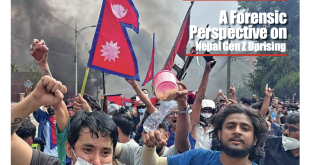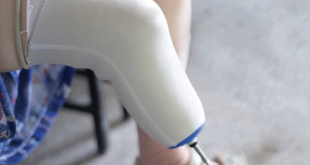 Even after nine months since the coronavirus first emerged in Wuhan, many hospitals across the world are facing severe shortages of necessary medical care supplies that are essential for saving the lives of seriously ill COVID-19 patients. And, ventilators are at the forefront.
Even after nine months since the coronavirus first emerged in Wuhan, many hospitals across the world are facing severe shortages of necessary medical care supplies that are essential for saving the lives of seriously ill COVID-19 patients. And, ventilators are at the forefront.
When Europe became the epicenter of pandemic in March and early April and news spread about the over-burdened Italian hospitals that were forced to reserve ventilators for patients who were most likely to survive, countries around the world raced to design and produce ventilators to avoid the worst-case scenario.
While the developed countries had the option to scale up their production, the lower income countries that don’t make anything were left scrambling for options. In Nepal, medical supplies and ventilators were already limited to fight with the novel coronavirus when the country went into lockdown on March 24.
According to the Ministry of Health and Population of Nepal, the country had only 771 ventilators and 1551 ICU beds before the lockdown. Of the total ventilators, almost 70 percent was owned by private hospitals in the Kathmandu valley, so hospitals outside the valley had little chance to get their hands on these machines. With limited resources, health professional feared the county’s health system wouldn’t be able to cope with the crisis if the COVID-19 cases were to overwhelm the hospitals in the coming days. As coronavirus was raging across the globe and countries were racing to ramp up the production of medical supplies, a campaign was spearheaded to establish a ‘ventilator bank’ in Nepal. “It was in mid-April, an idea came to me overnight and I felt a strong drive to do something about it,” says Dr. Bishal Dhakal, initiator and coordinator of Nepal Ventilator Services. That night, he posted a blog on medium.com, starting a pledge for securing 1000 ventilators in 100 days in Nepal.
“At most, Nepali hospital systems have around 1000 ventilators, combined. This will not even be sufficient to take care of who’s who of Nepal. Most common folks will be left with no choice, and a life, which could have potentially been saved, would be lost. Even those 1000 ventilators would not be useful in different parts of the country where flare-ups might happen, as they belong to affluent hospitals and will be prioritized and given to financially secure he
wrote on his blog.
 He called for corporate houses, federal organizations, NGOs, INGOS and individual donors from Nepal and from around the world to collaborate and coordinate for urgently needed supplies for saving the lives of the people of Nepal.
He called for corporate houses, federal organizations, NGOs, INGOS and individual donors from Nepal and from around the world to collaborate and coordinate for urgently needed supplies for saving the lives of the people of Nepal.
Soon, Rameshore Khanal, a former government secretary, Deependra Chaulagain, director of Samriddhi
Foundation, Dr. Subash Acharya, head of the critical care unit at Tribhuvan University Teaching Hospital (TUTH), and Niranjan Shrestha, director of Laxmi Group and youth entrepreneur, came together and moved quickly to establish a ventilator bank in Nepal.
“In about two weeks, we had the ventilator bank initiation established, and it was incorporated as a non-profit company,” Dr. Dhakal informs. The company was registered under the name of Nepal Ventilators Services. After they posted about the campaign on Twitter and Facebook, help came pouring in from Nepal and abroad. By June fi st
week, the organization had already collected 12 lakh rupees. “We started the campaign to pool 1000 ventilators in 100 days to bring in some relief to hospitals that were facing acute shortages of life-saving machines during this crisis period of COVID-19,” Dr. Dhakal says.
The organization has procured 60 ventilators in six months since the campaign was launched. According to Dr. Dhakal, they have leased 30 ventilators to hospitals in different parts of the country, so far. Of them,16 machines have been given to hospitals outside the valley-six to Narayani Hospital in Birgunj, three to Janakpur Hospital in Janakpur, and four each to Bheri Hospital in Nepalgunj, and Bhim Hospital in Bhairahawa. “At a time when even one has the money, ventilators are not easily available in the market, the breathing aids from Nepal Ventilators Services have brought huge relief to hospitals like ours,” said medical superintendent of Bheri Hospital Dr. Prakash Bahadur Thapa, talking to BBC Nepali News. “We had only one ventilator for COVID-19patients, so we feel more at ease to treat patients now.”
Spokesperson of Narayani Hospital, Dr. Atulesh Kumar Chaurasiya, has also applauded the organization’s effort in easing the shortages of the life-saving machines in many hospitals. “Their work is really commendable, particularly at a time when the world is embroiled in unprecedented resource shortages. These ventilators will not just help COVID-19 patients, but also those who are sufferin from other respiratory illness.”

“In Nepal, people in need of ventilators are referred from one hospital to another. We are against this practice and want to pressurize the system to change this bad culture,” says Dr. Dhakal. “Instead of people going from one hospital to another, it should be the other way round. The hospitals should be able to provide them ventilators wherever they are.”
The organization charges Rs 3,000 per day to private hospitals, while government hospitals don’t have to pay for the machines. “Our aim is to reinforce the public health care system, so we are only charging operational cost to government hospitals. The rate for private hospitals is also three times cheaper than the market price. We want the patient to pay as less as possible,” Dr. Dhakal adds. The hospitals can use the machine for three months before returning them. After that, they have to renew the lease to extend its use.
The organization is procuring both invasive and non-invasive ventilators. According to Dr. Dhakal, all the machines are FDA approved brands from Europe and America, with reputations of decades of service in Nepal and abroad. “We have also introduced high flow nasal cannulas especially focusing on COVID-19 patients. It hadn’t been supplied to Nepal until now, but we were able to supply even to private hospitals.” The organization is also planning to provide servicing and maintenance of these medical devices in future.
When asked if they had to face any challenges in procuring the machines, he says, “Except for the scarcity of machines due to disruption in the global supply chain, there weren’t any problems.” “We used our entrepreneurial value and our straightforward buying, bypassing the procurement process. We went straight shopping. Whoever had the stock, whoever were able to source, and whoever matched our quote, we picked up those guys.” The government, on the other hand, has to follow lengthy purchasing processes to get the ventilators.
Currently, only 25 out of 104 government hospitals in Nepal have the life-saving ventilator machines. With only 600 ventilators for 30 million citizens, Nepal is estimated to require 3000-5000 ventilators for adequate access to treat COVID-19 patients during the pandemic.
The organization has raised a total of Rs 5.5 million as donations from Nepal and abroad, so far. They have also taken bank loans to pay for the ventilators, which they plan to pay from donations collected in future. Dr. Dhakal says that, with people joining hands, this could be one of the biggest crowd-funded projects of Nepal, and with everyone’s support, they can hopefully meet their target very soon.
 Medicosnext
Medicosnext




